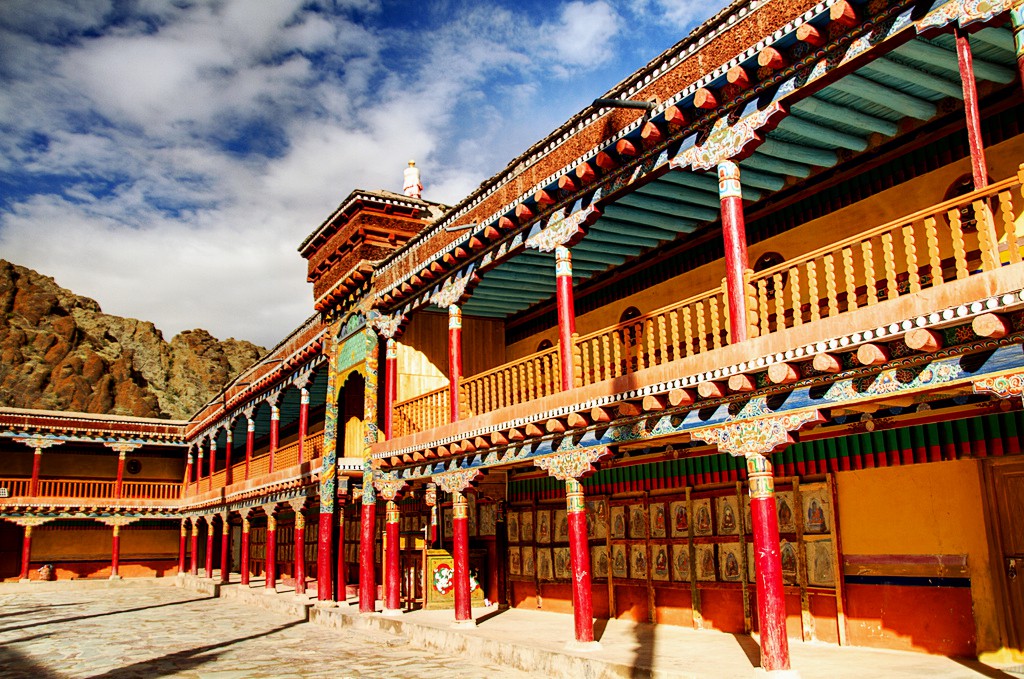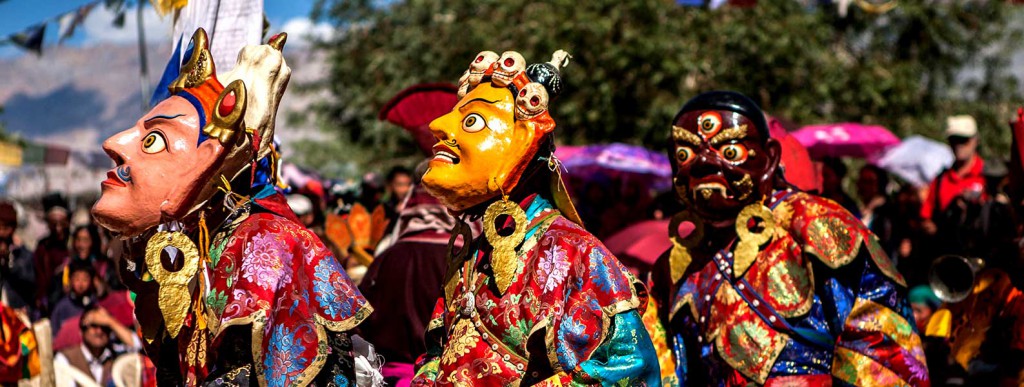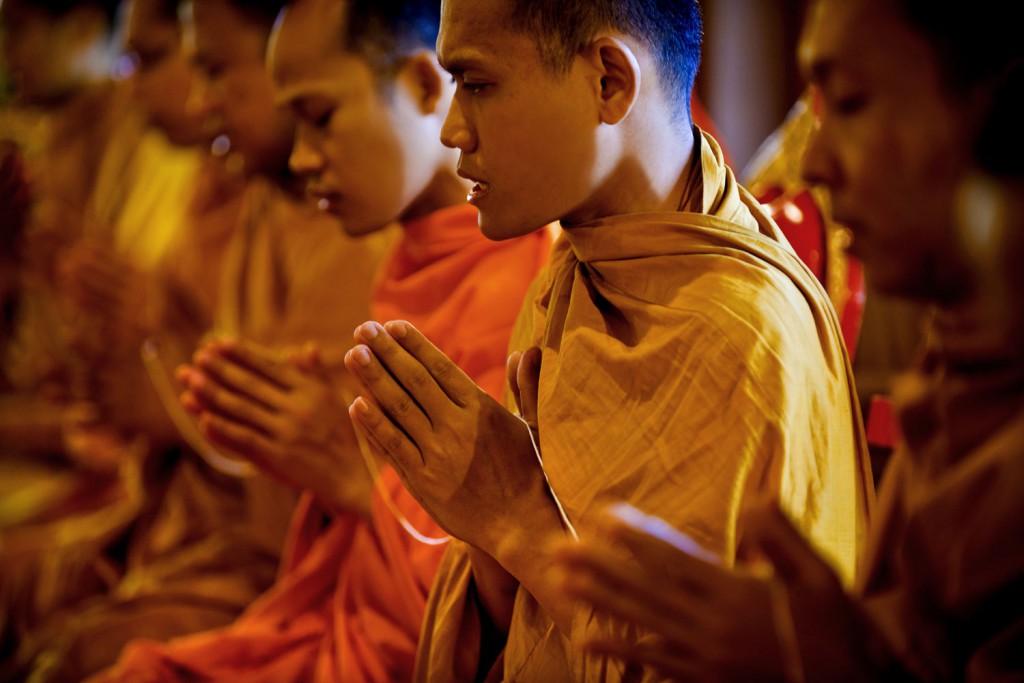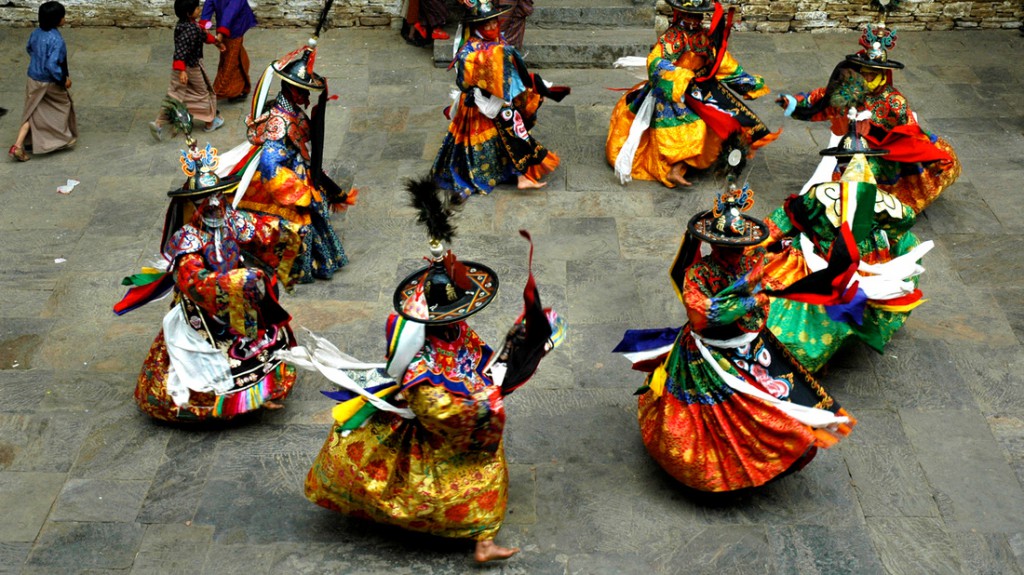The biggest and the oldest monastery of Ladakh – Hemis monastery – celebrates the birth anniversary of Padmasambhava (Guru Rimpoche), one of the founders of Tibetan Buddhism, who is also considered the reincarnation of Lord Buddha, every year on the occasion of 2-day Hemis Festival. It is located only 45 km south from Leh, Ladakh.
A little bit more about the Hemis monastery……..

The Hemis Monastery or Hemis Gompa in Leh, Ladakh
Built in 1630, it is the most prominent Buddhist monastery of Ladakh that was re-established in 1672 by the Ladakhi king Sengge Namgyal. It is a must-visit for visitors as it has a copper-gilt statue of the Lord Buddha, various stupas and statues embedded with semi-precious stones and much more. You can also enjoy a pleasant three kms walk on the hill above the monastery to sight the sacred hermitage, founded by the great Gyalwa Kotsan. If you stay overnight at Hemis monastery, you can witness the early morning prayers, which are a rare sight.
Opening Time: 06:00 AM
Closing Time: 08:00 PM
Entry fee: Free
Best time to Visit: June to September
How to reach Hemis Monastery?
By Air:
Board a flight to Kushok Bakula Rimpochhe Airport, Leh. It is the closest international airport. Once you reach here, book a cab and Hemis will be around 45 kms away.
By Train:
Book a train to Jammu Tawi Railway Station in Jammu and Kashmir. Hire a taxi and Hemis will be around 728 kms away. The travel will be approximately 15 -16 hours.
All you need to know about the Hemis Festival 2019

- The Masked dance – Cham dance at Hemis Monastery
This year, the Hemis Festival will be celebrated on 11th July and 12th July. Around 500 Lamas play host to this festival. The purpose of this festival is to celebrate the victory of good over evil and seek blessings of Guru Padmasambhava for spiritual and health well-being. It is a perfect example of the local Ladakhi culture.
How it is celebrated?
The festival commences with the head Lama bringing the two storey high ‘Thangka’ of Guru Padmasambhava – a sacred painting embedded with precious pearls and semi-precious jewels on pristine silk cloth – into the courtyard “Hemis Gompa” for everyone to seek divine blessings.
The Lamas of the monastery perform the Cham dancewear bright masks and dance to the beats and music of drums and cymbals portraying guardian divinities of the Dugpa order and acting out feats performed by Guru Padmasambhava.

Buddhist Monks praying at a Monastery
The unconditional faith and devotion of the Buddhist monks signify the strong spiritual influence of Buddhism, while they join their hands to the statue of Guru Padmasambhava.
When is it celebrated?
The Hemis festival falls between June-July, every year.
2019: 11th-12th July
To know more about the Festivals of India, click here.
How to make your Hemis Festival experience memorable?

Monks playing traditional music instruments at the Hemis Festival
While the Hemis Festival celebrations are going on, you can savor lip-smacking foods at a Tibetan cafe right outside the main entrance of the Hemis monastery.
- You can buy low-cost postcards, books, prayer flags, wooden dragon statues and lots of other artifacts from the Hemis museum shop.
- You can take a stroll around the monastery and enjoy the mesmerizing beauty of the monastery.
- You can interact with the monks and learn more about the history of the monastery.
- Also, don’t miss the country liquor, made of fermented Barley, served during the festival.
This festival dates back to 200 years that brings along a lot of colors in the city. The costumes of the dance performers are vibrant and luxuriant. This colorful atmosphere fetches an all new charm to the festival. Overall, it is an enriching spiritual experience of Buddhist traditions and culture.



